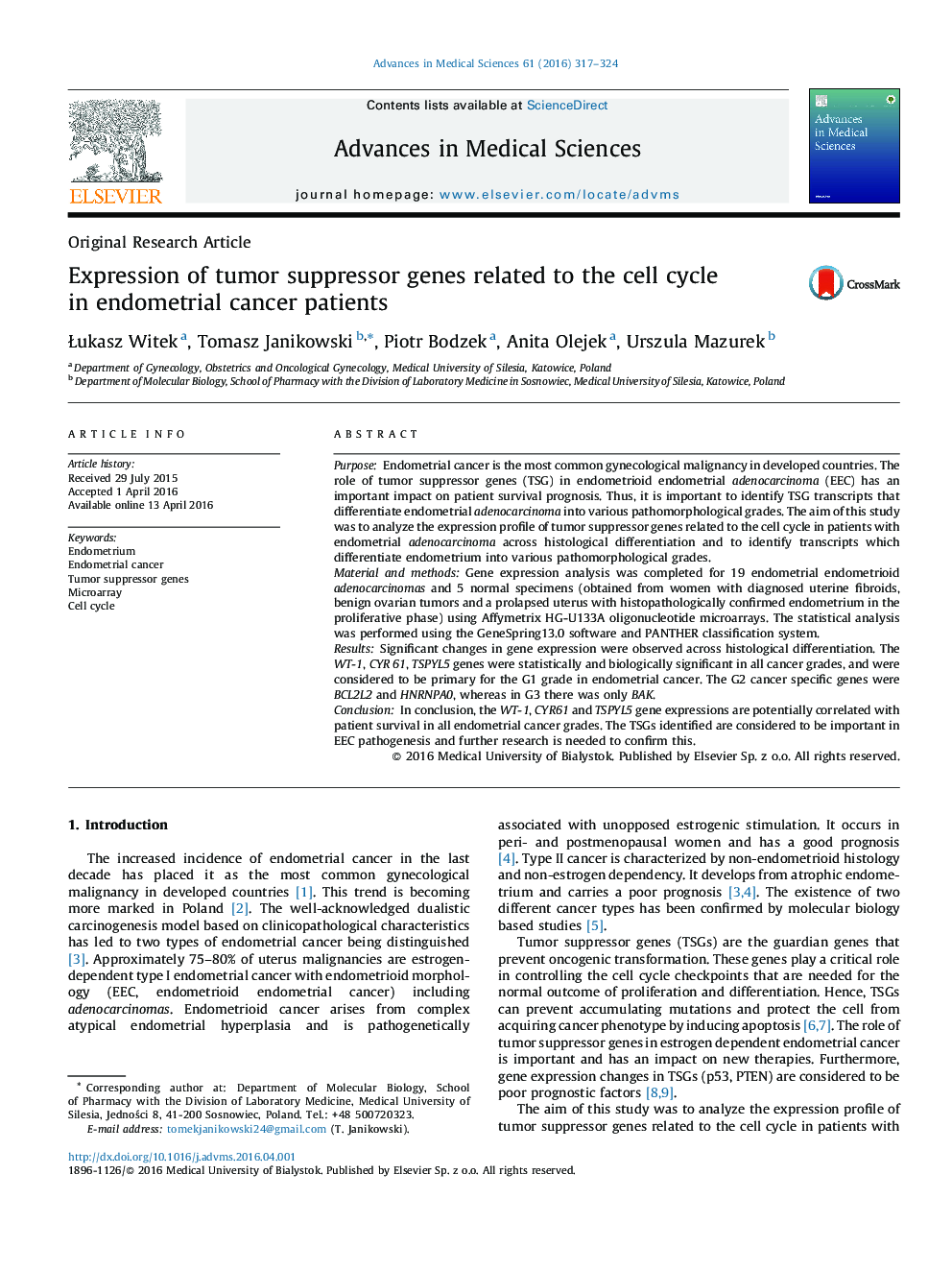| Article ID | Journal | Published Year | Pages | File Type |
|---|---|---|---|---|
| 2031849 | Advances in Medical Sciences | 2016 | 8 Pages |
PurposeEndometrial cancer is the most common gynecological malignancy in developed countries. The role of tumor suppressor genes (TSG) in endometrioid endometrial adenocarcinoma (EEC) has an important impact on patient survival prognosis. Thus, it is important to identify TSG transcripts that differentiate endometrial adenocarcinoma into various pathomorphological grades. The aim of this study was to analyze the expression profile of tumor suppressor genes related to the cell cycle in patients with endometrial adenocarcinoma across histological differentiation and to identify transcripts which differentiate endometrium into various pathomorphological grades.Material and methodsGene expression analysis was completed for 19 endometrial endometrioid adenocarcinomas and 5 normal specimens (obtained from women with diagnosed uterine fibroids, benign ovarian tumors and a prolapsed uterus with histopathologically confirmed endometrium in the proliferative phase) using Affymetrix HG-U133A oligonucleotide microarrays. The statistical analysis was performed using the GeneSpring13.0 software and PANTHER classification system.ResultsSignificant changes in gene expression were observed across histological differentiation. The WT-1, CYR 61, TSPYL5 genes were statistically and biologically significant in all cancer grades, and were considered to be primary for the G1 grade in endometrial cancer. The G2 cancer specific genes were BCL2L2 and HNRNPA0, whereas in G3 there was only BAK.ConclusionIn conclusion, the WT-1, CYR61 and TSPYL5 gene expressions are potentially correlated with patient survival in all endometrial cancer grades. The TSGs identified are considered to be important in EEC pathogenesis and further research is needed to confirm this.
